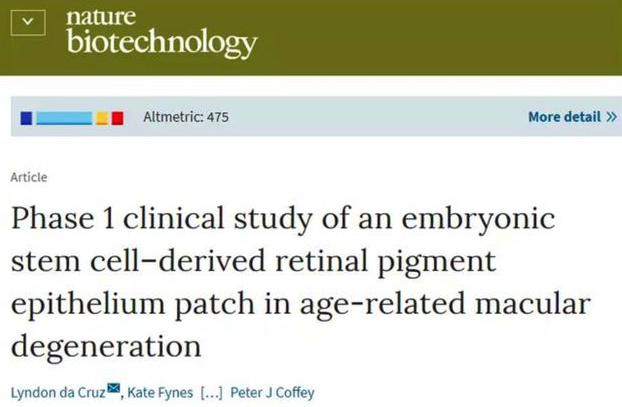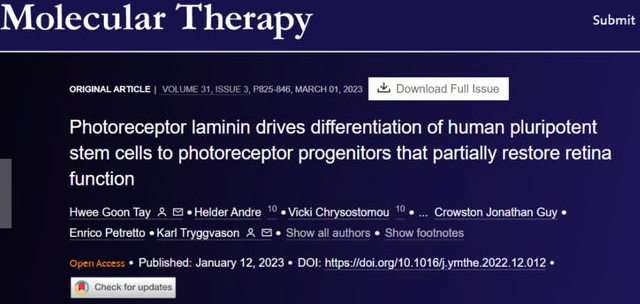
Source: Stem Cells and Genetic Sciences
The eyes are the window through which we perceive the world, however, many people suffer from vision problems due to eye diseases. Myopia, farsightedness, presbyopia, astigmatism and other refractive errors, as well as conjunctivitis, cataracts, dry eye and other eye diseases, often make people troubled. Although laser surgery was once seen as a "lifesaver" to solve refractive errors such as myopia, the potential risks still put some people off. However, stem cell technology offers a new path for those eager to improve their vision and say goodbye to glasses.

In 2018, a Phase I clinical trial was conducted at Moorfield Eye Hospital in the UK to treat patients with age-related macular degeneration. After the two patients received the retinal pigment epithelial cells derived from embryonic stem cells, their vision was significantly restored, and they were able to see and read normally. The results raise hopes for stem cell treatments for eye diseases. In 2019, Osaka University in Japan cultured corneal tissue using induced pluripotent stem cells and successfully transplanted it into patients with severe corneal epithelial stem cell failure, and the vision of the patients was significantly improved after surgery. This is expected to solve the problem of tens of millions of corneal patients around the world who do not have access to suitable donors.

In addition, the research team at the Duke-NUS Vision Research Centre has developed a stem cell culture technology based on purified laminin that can guide stem cells to differentiate into photoreceptor progenitor cells, thereby improving vision. For hereditary retinal diseases such as macular degeneration and retinitis pigmentosa, this brings more hope. For hundreds of millions of "glasses people", stem cell technology to cure myopia seems no longer a dream. One direct approach is to inject stem cells into the retina, which is not a direct cure for myopia, but by improving the environment in which the retinal cells grow, it is expected to restore their function and thus improve vision. After differentiation into retinal cells, stem cells can further differentiate into different types of cells such as photoreceptor cells and neurons, helping to repair the retinal tissue structure. Although stem cell therapy for vision improvement is still in the research phase, the growing number of animal trials and clinical practices provide strong support for this technology, and we hope that it will be realized soon to bring light to those patients with impaired vision. With stem cell therapy, we may be able to say goodbye to laser surgery and actually take off our glasses and see the world more clearly.